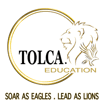Podcast
Questions and Answers
Which of the following is the PRIMARY goal of leadership team development within an organization?
Which of the following is the PRIMARY goal of leadership team development within an organization?
- To promote individual recognition and rewards for leaders.
- To reduce operational costs by streamlining leadership tasks.
- To establish a strict hierarchy within the leadership structure for clearer authority.
- To enhance the skills, capabilities, and effectiveness of the leadership group. (correct)
Investing in leadership team development can lead to several benefits for an organization. Which of the following is NOT typically associated with this investment?
Investing in leadership team development can lead to several benefits for an organization. Which of the following is NOT typically associated with this investment?
- Improved communication among team members.
- Increased operational efficiency of lower-level employees. (correct)
- Enhanced collaboration across different departments.
- Development of strategic thinking skills within the leadership team.
What is the role of audience analysis in developing a program communication strategy?
What is the role of audience analysis in developing a program communication strategy?
- To create a standardized message that appeals to all stakeholders regardless of their differences.
- To identify the audience's needs, preferences, and behaviors to tailor messages effectively. (correct)
- To determine the budget allocated for each communication channel.
- To select the communication channels based on cost-effectiveness rather than audience preference.
When defining communication goals and objectives for a program, what does the acronym 'SMART' emphasize?
When defining communication goals and objectives for a program, what does the acronym 'SMART' emphasize?
In the context of program communication, why is it important to develop key messages and content that reflect the organization's brand identity and voice?
In the context of program communication, why is it important to develop key messages and content that reflect the organization's brand identity and voice?
What is the purpose of 'conversion rates' as a metric for measuring the effectiveness of a communication strategy?
What is the purpose of 'conversion rates' as a metric for measuring the effectiveness of a communication strategy?
How does Quality Assurance (QA) primarily differ from Quality Control (QC) in project management?
How does Quality Assurance (QA) primarily differ from Quality Control (QC) in project management?
Which of the following activities is MOST indicative of Quality Control (QC) in a project?
Which of the following activities is MOST indicative of Quality Control (QC) in a project?
What role does 'data gathering' play as a method of Quality Control?
What role does 'data gathering' play as a method of Quality Control?
Why is change management important for organizations undergoing significant transformations?
Why is change management important for organizations undergoing significant transformations?
Which of the following is the MAIN purpose of 'identifying stakeholders' when creating a program communication strategy?
Which of the following is the MAIN purpose of 'identifying stakeholders' when creating a program communication strategy?
In change management, what is the purpose of the 'prepare for change' step?
In change management, what is the purpose of the 'prepare for change' step?
What does the 'implement changes' step entail in the change management process?
What does the 'implement changes' step entail in the change management process?
In change management, which type of change is characterized by planning changes in advance of an expected situation?
In change management, which type of change is characterized by planning changes in advance of an expected situation?
Which of the following best describes 'reactive change' in change management?
Which of the following best describes 'reactive change' in change management?
What is the purpose of leadership team development activities that encourage leaders to work together?
What is the purpose of leadership team development activities that encourage leaders to work together?
How does leadership team development foster innovation within an organization?
How does leadership team development foster innovation within an organization?
Which of the following is a key component of the 'Embed and solidify changes' step in change management?
Which of the following is a key component of the 'Embed and solidify changes' step in change management?
What is the role of the 'Review and analyze' step in the change management process?
What is the role of the 'Review and analyze' step in the change management process?
What is the primary benefit of 'internal communications' in change management?
What is the primary benefit of 'internal communications' in change management?
Flashcards
Leadership Team Development
Leadership Team Development
Enhancing the skills, capabilities, and effectiveness of a group of leaders.
Investing in Leadership Team Development
Investing in Leadership Team Development
Organizations can enhance collaboration, improve communication, develop strategic thinking, foster innovation and build trust and cohesion.
Program Communication Strategy
Program Communication Strategy
A plan that guides how you share information and messages about your program, aligning with goals and objectives.
Audience Analysis
Audience Analysis
Signup and view all the flashcards
Message Development
Message Development
Signup and view all the flashcards
Channel Selection
Channel Selection
Signup and view all the flashcards
Identify Your Stakeholders
Identify Your Stakeholders
Signup and view all the flashcards
Define Communication Goals
Define Communication Goals
Signup and view all the flashcards
Choose Communication Channels
Choose Communication Channels
Signup and view all the flashcards
Develop Core Messages
Develop Core Messages
Signup and view all the flashcards
Implement Communication Strategy
Implement Communication Strategy
Signup and view all the flashcards
Quality Assurance
Quality Assurance
Signup and view all the flashcards
Quality Control
Quality Control
Signup and view all the flashcards
Product Testing and Evaluation
Product Testing and Evaluation
Signup and view all the flashcards
Inspection
Inspection
Signup and view all the flashcards
Data Gathering
Data Gathering
Signup and view all the flashcards
Change Management
Change Management
Signup and view all the flashcards
Prepare for Change
Prepare for Change
Signup and view all the flashcards
Create a Vision for Change
Create a Vision for Change
Signup and view all the flashcards
Anticipatory Change
Anticipatory Change
Signup and view all the flashcards
Study Notes
Leadership Team Development
- Leadership team development enhances the skills, capabilities, and effectiveness of leaders within an organization.
- It focuses on teamwork, collaboration, and strategic thinking among leaders.
- The overall goal is to drive consistency and cohesion, improving performance and achieving business goals.
- A strong group of leaders inspires employees, makes informed decisions, and navigates difficult periods.
- Leadership team development shapes the abilities and attitudes of leaders, increasing their confidence and competence.
- Activities encourage leaders to collaborate, valuing diverse perspectives, which improves decision-making and problem-solving.
- Enhancing leadership communication skills helps leaders articulate thoughts, actively listen, and provide constructive feedback.
- Development emphasizes strategic thinking skills, allowing leaders to analyze situations, identify opportunities, and develop long-term plans.
- A strong leadership team fosters innovation by nurturing a welcoming environment for new ideas, promoting creative thinking and problem-solving.
- Building trust and cohesion among team members creates a safe space for communication, leading to increased collaboration, productivity, and employee satisfaction.
Program Communication Strategies
- A program communication strategy is a plan for sharing information with stakeholders (donors, beneficiaries, partners, staff).
- It aligns communication goals, objectives, channels, and activities with the program's vision, mission, and outcomes.
- A well-designed strategy enhances visibility, credibility, engagement, and impact.
- It guides an entire program, setting the tone and direction.
- The strategy also enables stakeholders and partners to provide input and agree on a unified approach.
- An agreed-upon strategy serves as a reference for staff and partners.
Key Elements of a Communications Strategy
- Audience Analysis involves identifying the target audience, their needs, preferences, behaviors, and where to reach them.
- Audience analysis helps tailor messages and choose appropriate communication channels.
- Message Development requires clear, concise, and compelling messages.
- Messages should align with organizational goals and resonate with the audience, conveying the desired information and evoking the intended response through appropriate tone, language, and content.
- Channel Selection and Implementation means choosing the right communication channels to reach the target audience like email, websites, media, events, or direct mail.
- Implementation involves executing the communication plan effectively across selected channels.
Creating a Program Communication Strategy
- Identify stakeholders which include groups or individuals with an interest or influence in your program.
- Use stakeholder analysis to map out their characteristics, needs, expectations, and preferences.
- Define Goals and Objectives that should be SMART (specific, measurable, achievable, relevant, time-bound) and linked to program goals.
- Choose Channels and Activities: Select the best ways to deliver messages based on stakeholder analysis, goals, objectives, resources, and budget, mapping them using a communication matrix.
- Develop Key Messages and Content: Core messages should be clear, concise, consistent, and compelling.
- The messages must highlight your program's value proposition, impact, and stories and consider the tone, style, and language to reflect your brand.
- Implement and Monitor the Strategy by following your communication plan and calendar, using the right tools and platforms.
Measuring Communication Strategy Effectiveness
- Goal Achievement includes determining if the strategy achieved its SMART goals, such as brand awareness, ROI, lead generation, and customer satisfaction.
- Audience Engagement can be determined from metrics like increased email click-through rates, responses, and subscriptions.
- Conversion Rates are tracked such as leads generated, sales made, registrations, sign-ups, and downloads.
- Feedback and Surveys provide a means of collecting feedback from stakeholders, customers, colleagues, and relevant parties.
- ROI measures if the strategy was successful in meeting targets.
Quality Assurance and Control
- Quality Assurance is management processes that establish a project's organization, design, objectives, and resources.
- These processes provide performance standards and feedback, prevent mistakes, and ensure that project requirements are met.
- Quality Control are technical processes that examine, analyze, and report on a project's progress and conformance with requirements.
- Quality Assurance Checklists confirm that products conform to quality standards.
- Audits assess adherence to quality regulations and expectations, performed systematically by qualified individuals.
- Quality Control monitors and records whether a product or service meets quality standards defined in the project’s Quality Assurance Plan.
- Product Testing and Evaluation identifies defects, problems, or issues is determined through tests.
- Inspections ensure products meet the specified quality standards, identifying and correcting issues early.
- Data Gathering collects and analyzes feedback, surveys, testing, or observations, to identify patterns of quality issues.
- Quality Assurance focuses on preventing risks while Quality Control focuses on testing the output.
Change Management
- The process implements changes through effective strategies.
- The process reviews reasons for change, implementing changes, and helping people adapt.
- The stages involve any change management strategy and its implementation through a strategy and steps.
- Preparing for change involves understanding the changes and preparing staff, it is an important part of the process, ensuring the change manager supports staff through any concerns.
- Creating a vision for change consists of stakeholders agreeing for a change, also involved are parties delegating key performance indicators (KPIs), plans also account for possible problems.
- Implementing changes puts the change plans into action, the management here make sure everyone is doing their duties, employees are happy for the change to smoothly occur.
- Solidifying changes makes sure staff doesn’t slip back, new systems such as training or staff are introduced.
- Analysis ensures changes are beneficial and continue, change managers review what worked and adjust what didn't.
4 Types of Change Management
- Anticipatory responds to something expected by planning changes in advance.
- Reactive manages an unforeseen event, often employed in crisis situations with little time to plan.
- Incremental introduces gradual changes such as new features to an existing app.
- Strategic affects the overall direction of the organization by new technology
Benefits of Change Management
- Minimizes disruption and ensures ongoing projects run smoothly.
- Promotes acceptance and adoption, addressing resistance, especially for workflow, process, or technology changes.
- Enhances team performance by supporting employees through transitions, maintaining and improving output.
- Creates a culture of adaptability, fostering improvement.
Importance of Change Management
- Ensuring smooth operations and employee understanding, especially during chaotic times.
- Allows for large-scale transformations by aligning workforce capabilities with objectives, fostering engagement.
- Provides an efficient, replicable approach dealing with these changes and challenges.
- It keeps employees and stakeholders informed, preventing rumors and misinformation.
- Helps communicate with customers, manage expectations, and address concerns, maintaining satisfaction.
Studying That Suits You
Use AI to generate personalized quizzes and flashcards to suit your learning preferences.





